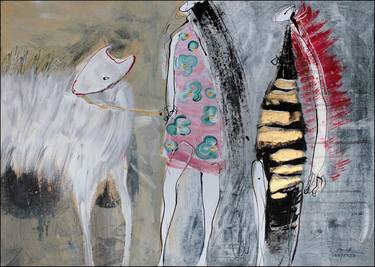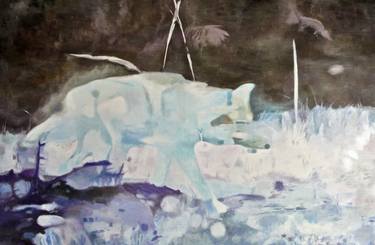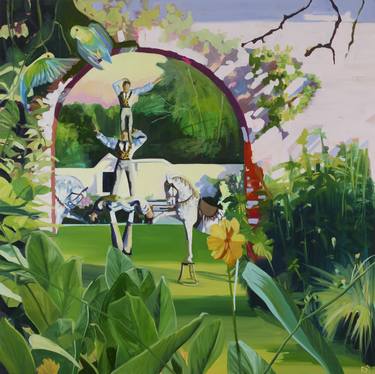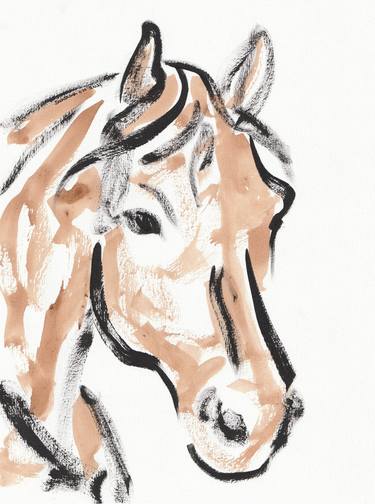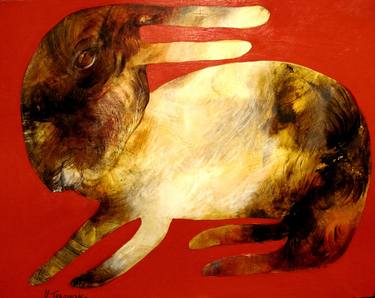- All Artworks
- Paintings
- Animal
Animal Paintings For Sale
Browse art and see similar matches
Try Visual Search
Category
Filter (1)
Filter
Category
Style
Subject
Medium
Material
Price
Size
Orientation
Color
Artist Country
Featured Artist
Paintings, 23.6 W x 23.6 H x 1.2 D in
Estonia
$2,210
Prints from $100
Paintings, 5.9 W x 8.7 H x 0.4 D in
Hungary
$185
Prints from $80
Paintings, 47.2 W x 39.4 H x 1.2 D in
Romania
$5,430
Prints from $40
Paintings, 12 W x 12 H x 1 D in
United States
$1,970
Paintings, 55 W x 72 H x 1.5 D in
South Korea
$4,950
Paintings, 42 W x 56 H x 3 D in
United States
$9,000
Paintings, 57.3 W x 57.3 H x 2 D in
Japan
$8,930
Prints from $92
Paintings, 27.6 W x 19.7 H x 0.1 D in
Czech Republic
$1,399
Prints from $40
Paintings, 7.1 W x 9.8 H x 0.4 D in
Hungary
$230
Prints from $80
Paintings, 21.3 W x 31.9 H x 0.8 D in
France
$2,210
Prints from $100
Paintings, 11.5 W x 8.5 H x 0 D in
India
$350
Prints from $43
Paintings, 5 W x 5 H x 0.7 D in
United States
$180
Paintings, 5.5 W x 8.3 H x 0.4 D in
Hungary
$180
Prints from $80
Paintings, 6 W x 8 H x 0.1 D in
India
$295
Prints from $49
Paintings, 31.5 W x 23.6 H x 0.7 D in
Netherlands
$3,070
Prints from $60
Paintings, 23.6 W x 17.3 H x 0 D in
United Kingdom
$495
Prints from $40
Paintings, 19.7 W x 19.7 H x 0.8 D in
Italy
$1,910
Paintings, 22 W x 29.9 H x 0 D in
United Kingdom
$480
Prints from $40
Paintings, 6 W x 8 H x 0.1 D in
India
$295
Prints from $48
Paintings, 43.3 W x 55 H x 1.4 D in
Spain
$2,270
Paintings, 59.1 W x 39.4 H x 0.4 D in
Czech Republic
$3,610
Paintings, 39.4 W x 39.4 H x 2 D in
Czech Republic
$4,310
Prints from $250
Paintings, 25.7 W x 25.7 H x 1 D in
Japan
$1,123
Prints from $88
Paintings, 19.9 W x 15.9 H x 0.6 D in
United Kingdom
$940
Prints from $40
Paintings, 11.8 W x 15.7 H x 0.8 D in
Spain
$680
Paintings, 31.5 W x 39.4 H x 0.4 D in
Spain
$1,810
Prints from $72
Paintings, 36 W x 36 H x 1.5 D in
United States
$2,370
Prints from $64
Paintings, 31.5 W x 39.4 H x 0.8 D in
France
$1,960
Prints from $40
The Dream of Reason Produces Monsters
Paintings, 40 W x 30 H x 1 D in
Canada
$4,210
Prints from $100
Paintings, 47.2 W x 47.2 H x 1.6 D in
United Kingdom
$5,230
Paintings, 39.4 W x 39.4 H x 0.8 D in
Hungary
$640
Prints from $50
Paintings, 31.5 W x 39.4 H x 0.7 D in
Italy
$2,410
Paintings, 39.4 W x 39.4 H x 2 D in
Japan
$3,050
Prints from $88
Paintings, 47.2 W x 35.4 H x 1.2 D in
Romania
$5,200
Paintings, 8.5 W x 11.5 H x 0.1 D in
India
$320
Prints from $50
Paintings, 11.5 W x 8.5 H x 0 D in
India
$360
Prints from $50
Paintings, 20 W x 16 H x 1 D in
Canada
$1,030
Prints from $40
Paintings, 57.1 W x 38.2 H x 1.6 D in
South Korea
$101,000
Paintings, 16 W x 12 H x 0.1 D in
India
$400
Prints from $40
Paintings, 7.9 W x 11.8 H x 0.8 D in
Argentina
$1,140
Prints from $100
Paintings, 8.5 W x 11.5 H x 0.1 D in
India
$360
Prints from $49
Original painting of Ghigi Pheasant, 2014
Paintings, 40.9 W x 11.4 H x 0.1 D in
Ireland
$940
Paintings, 11.5 W x 8.5 H x 0 D in
India
$350
Prints from $45
Paintings, 8.5 W x 11.5 H x 0.1 D in
India
$320
Prints from $50
Paintings, 22 W x 30 H x 1 D in
United States
$680
Paintings, 19.7 W x 19.7 H x 1.2 D in
Spain
$1,000
Prints from $70
Paintings, 17.3 W x 13.4 H x 0.4 D in
Canada
$570
Prints from $40
Paintings, 13.8 W x 19.7 H x 0.1 D in
Czech Republic
$775
Prints from $40
Paintings, 39.4 W x 39.4 H x 1 D in
Japan
$3,873
Prints from $88







